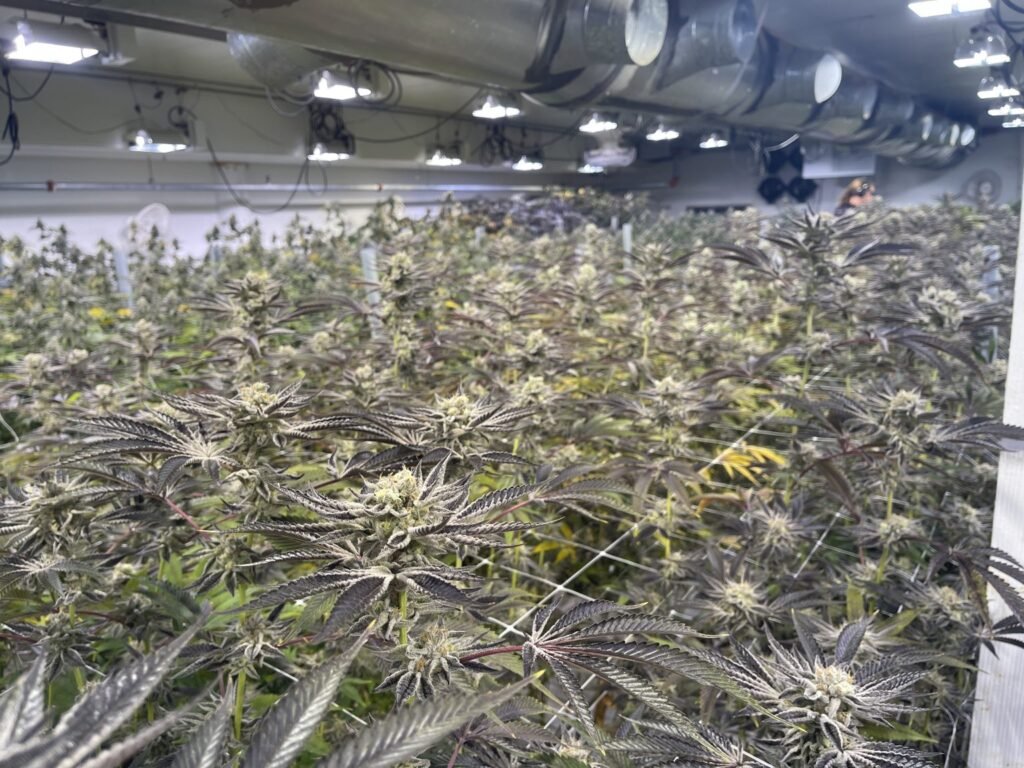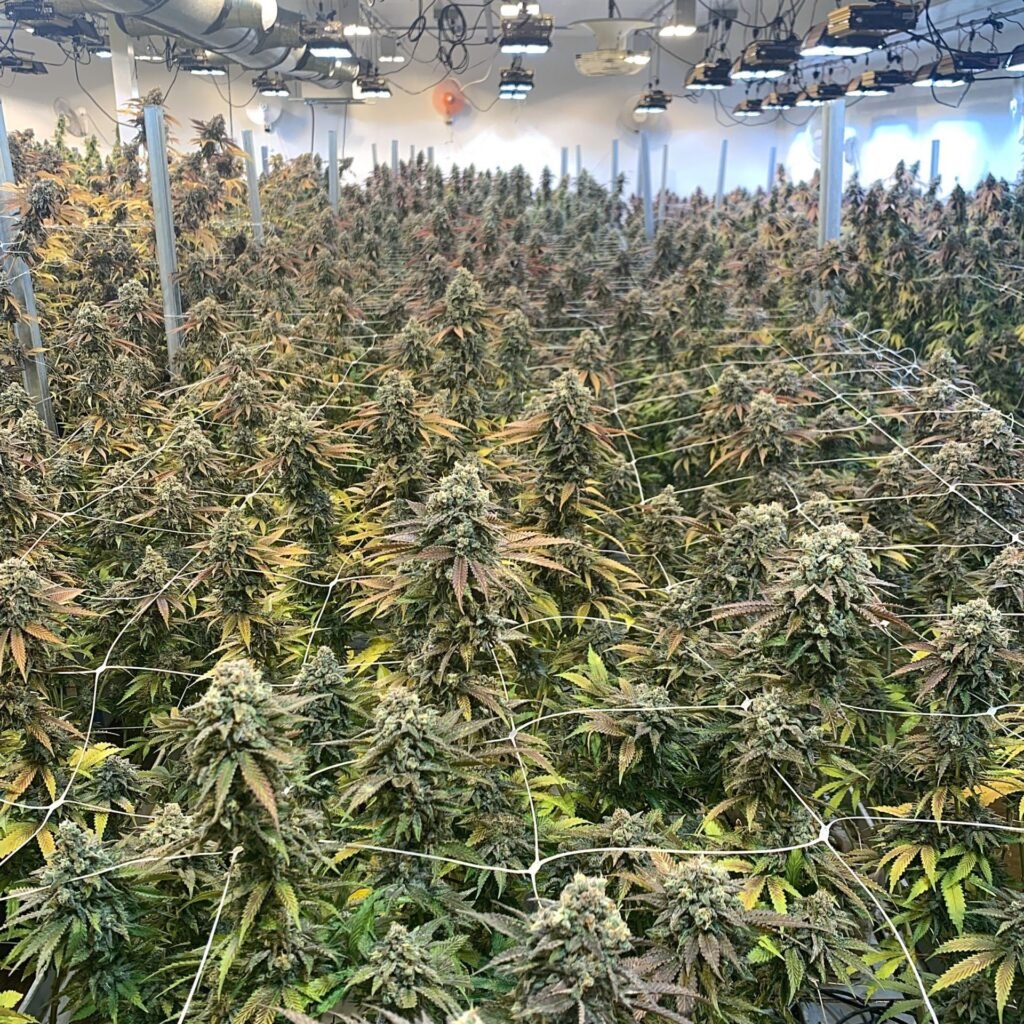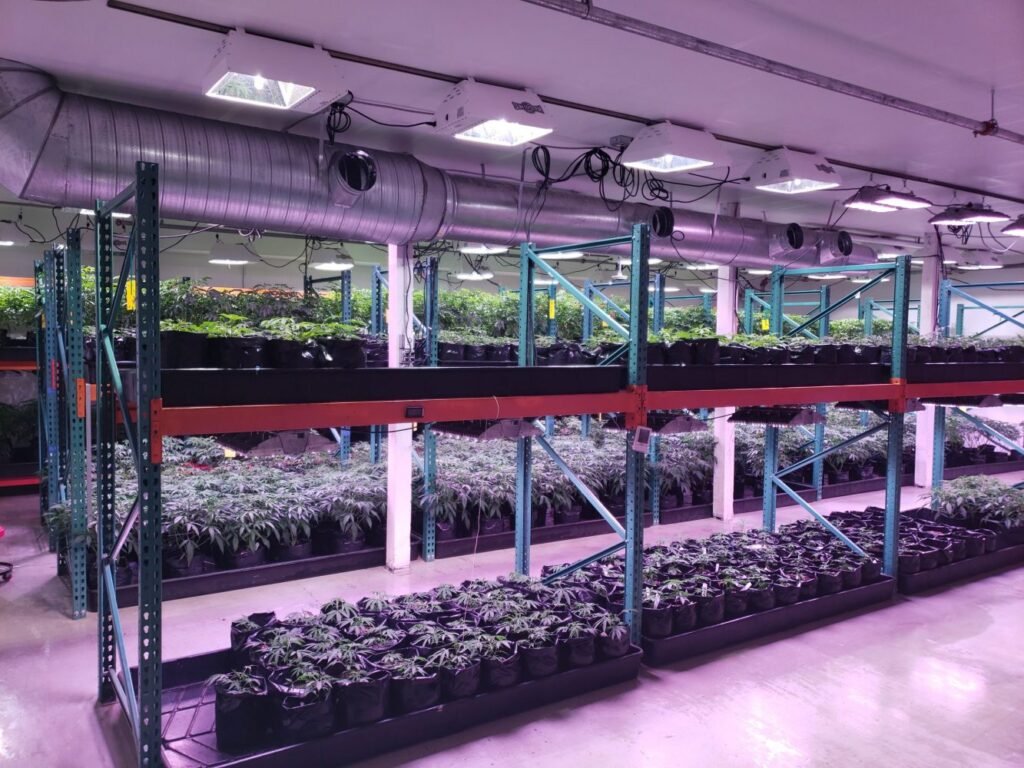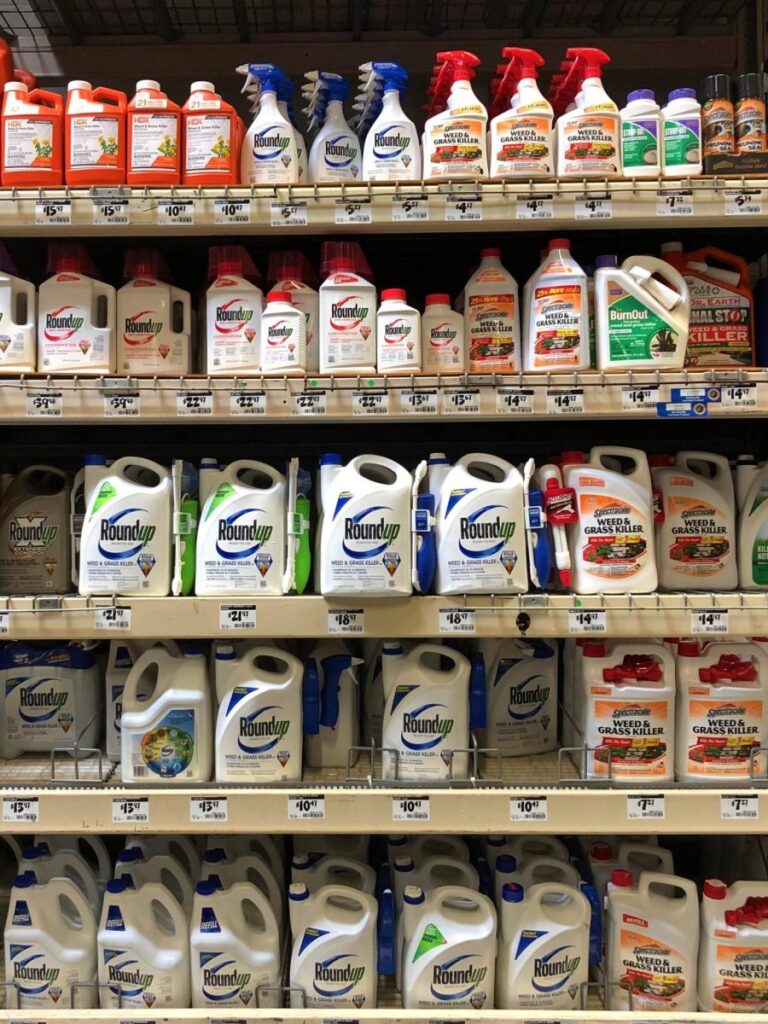House of Cultivar
Tier: 3
Location: Seattle, WA
Product Offerings: Flower, PreRolls, Live Resin Concentrates, Rosin, and 5 Star Hash.
About the Farm
“What you hold in your hand, what you see, what you taste, what you breathe in, and what you feel has a back story.” At House of Cultivar, they recognize that cannabis has made its journey throughout the human experience. They cultivate, curate, and celebrate craft cannabis.
House of Cultivar is a collection of like-minded cannabis enthusiasts with decades of experience between them. The team at House of Cultivar strives for nothing less than perfection. From hobbyist growers to commercial cultivators, each member possesses the knowledge and appreciation for their wide variety of genetic lineages. At House of Cultivar, they care about quality most of all. They strive to provide consumers with the best weed possible and set high standards within the industry. Most importantly, they respect the past, cherish the present, and embrace the future of cannabis.
Growing Process
Medium
At House of Cultivar, they utilize a highly developed growing method. That is to say, the medium they use to grow their plants is a hybrid they’ve developed after implementing and experimenting with a wide variety of growing methods. Firstly, they start with RHP-certified coco for their “base” approach to building their medium. The RHP certification ensures that the coco substrate is clean and pure. This means it can be used without any risk of contamination from heavy metals, seeds of weeds, insects, and human or plant pathogens. Additionally, they have found that coco substrates are the optimal medium for controlling water uptake, root air access, and nutrient level.
Then, upon initial hydration of the pots, they put “living” organic additions into the coco substrate. This includes Organics Alive Premium Mix, mycorrhiza, and beauveria bassina. Organic Alive Premium Mix is a rich soil addition. It has Organics Alive worm castings, pure vegetable compost, fossilized kelp Kelzyme, and powdered volcanic rock mineral. These ingredients have been specifically chosen and carefully measured for the optimal balance of growth and nutrition. Then, mycorrhizae improves plant nutrient uptake; translating to healthier, more resilient plants and higher quality yields. Lastly, beauveria bassina is a fungi used to control many soft-bodied insects. House of Cultivar cultures and grows this in their in-house tissue culture lab.
Method
House of Cultivar uses different techniques to make sure that their plants are getting the best and most efficient nutrition possible. Firstly, they apply fertilizer through the watering system of the plants. Then, they apply liquid fertilizer directly to the leaves of the plants. Their “living” medium is already an excellent source of nutrients. However, these additional techniques allow them to achieve an even greater level of plant performance and nutrient delivery. For instance, some of the mineral nutrients that they use include: calcium, magnesium, sugars, nitrogen, potassium, silica, and phosphorus. By varying ratios of these minerals throughout the various stages of plant life, they are able to optimize a plant’s production of cannabinoids, terpenes, and overall yields.
The technique of applying liquid fertilizer directly onto the plants leaves is based on a validated theory. These nutrients can be absorbed quickly through the leaf. In fact, leaf nutrient uptake is considerably faster than root uptake. As a result, this is the preferred method of providing nutrients to plants. It quickly balances nutrient demands across various plants that require increased feeding to sustain vigorous and optimal growth. Their feed solution is a blend of rich organic ingredients including cold pressed kelp, alfalfa, seaweed extracts, vitamin B1, and humic acid.
Flushing
“Flushing” a plant is the process of watering plants with nutrient-free water instead of the nutrient-rich mixture it’s received most of its life. As a result, plants use up, burn off, and get rid of built-up minerals and nutrients. House of Cultivar begins flushing their flowering plants at approximately 12 to 14 days prior to harvest. They do this by removing all nutrients and irrigating with fresh water and natural enzymes. Flushing alone won’t necessarily make your harvest taste or smell better. However, it will contribute to the overall quality of your flower’s “smokability”. In essence, flushing leads to smoother and tastier buds.
Environmental Controls
Image Source
At House of Cultivar, they have an indoor cultivation facility that utilizes a combination of forced air ducted cooling, heat pumps, and specialty dehumidifiers. Their dehumidifiers are designed to provide the optimal humidity for plant growth. In addition, each room has independent control of temperature, humidity, light intensity, vapor pressure, and soil moisture. This ensures that each strain can be grown within its ideal parameters. This fine tune control allows House of Cultivar to grow a wide range of different strains in the exact environmental conditions the plants need to maximize their unique genetic traits.
Further, House of Cultivar’s environmental control extends beyond the grow rooms and into the drying, curing, inventory, trimming, and packaging spaces as well. Within these spaces, dedicated HVAC systems provide the same amount of customizability to ensure that the cannabis product is always in a clean environment that is free of pathogens. In addition, the environment is regulated with the proper humidity and temperature to maintain terpene freshness.
Lighting
House of Cultivar uses a variety of lighting technologies well-suited for indoor cultivation. Their vegetative rooms utilize a combination of multi-spectrum CMH and LED fixtures. Both of these technologies provide their plants with ideal Photosynthetically Active Radiation (PAR) for enhanced growth. In addition, this offers the latest in grow light energy efficiencies. HPS lamps have been the standard in the flowering stage of cannabis for nearly 50 years. With the introduction of the double ended HPS lamps in 2010, this technology made a significant advancement in energy efficiency and overall performance.
Over the last decade, the industry has continued to see the introduction of other lighting technologies like LED, CMH, Plasma, and Induction. All of these seek to dethrone the HPS lamp as the king. House of Cultivar has come to the conclusion that the best lighting setup is the combination of 1000-watt HPS lamps and 630-watt CMH fixtures. This setup provides optimal performance, energy efficiency, and affordability. HPS lamps provide an unmatched intensity of reds and greens that insure beautifully dense flowers and high cannabinoid percentages. CMH lamps round out the light spectrum by providing the blues (UVB) which have been proven to enhance production of essential oils and terpenes.
Tissue Culture
House of Cultivar utilizes an advanced tissue culture laboratory to ensure the optimal success of all its different plants. This method first came to the scene in the 1950s in the orchid industry. In the decades since, the practice has been adopted by just about every other agricultural crop. Most important of all, it has been adopted by the cannabis industry.
Plant tissue is taken from the desired mother plants to the lab for cloning. This is done in culture media, a rich blend of ingredients that promote plant-cell growth. Tissue culture is seen as an important technology for the production of disease-free, high quality planting material and the rapid production of many uniform plants. It is also used to preserve plant genetics.
Using plant tissue increases the amount of planting material to be used in large scale planting. In this way, thousands of copies of a plants can be produced with a limited amount of donor mother plant material. These plants are observed to establish more quickly, grow more vigorously, be taller, and have a more uniform production cycle than conventional planting methods.
Benefits of Tissue Culture
Just as every person is different and unique, so is each plant. Some have traits like better color, yield, or pest resistance. For years, scientists have looked for methods to allow them to make exact copies of these superior individuals.
When plants reproduce, a combination of male and female genetics are combined to create an entirely new plant. As a result, just like in people, that offspring will not be entirely like the mother or father plant. This causes high unpredictability as to what characteristics the offspring plant may have. This is why many agriculture specialists turn to cloning. Cloning is traditionally achieved by taking a rooted cutting of a mother plant to grow a genetically identical, or clone, plant. But, cloning also has its issues with maintaining plant sterility, health, and epigenetic changes. In addition, keeping mother plants in a conventional setting takes lots of space, labor, water, nutrients, and other resources. For all of these reasons, House of Cultivar has supplemented cloning propagation with a far superior method to propagate and preserve a plant’s genetics: tissue culture.
Pest Management
Contrary to public perception “pesticide” is not an easily defined term in the world of agriculture. Pesticides are any substance, or mixture of substances, used to prevent, destroy, repel, or mitigate pests. In fact, this can be something as simple as water. To simplify the extremely complex nuances of all different types of pesticides, in a general sense, pesticides fall into three different categories: natural non-synthetic biopesticides, plant-based pesticides, and synthetic chemical (toxic) pesticides.
Biopesticides
Natural pest control is better and safer than synthetic non-organic chemicals. It is based on utilizing highly specific, naturally occurring pest control like insect-infesting bacteria. These products are effective against their target insects but are non-toxic to humans, pets, wildlife, and beneficial insects. Biopesticides are also short-lived in the environment and are less likely to result in insect resistance than synthetic chemicals. In addition to fighting disease and pests, these organisms benefit your soil and plants by decomposing organic matter releasing nutrients for absorption and helping improve the tilth of the soil. House of Cultivar uses an array of biopesticides.
All of the products House of Cultivar uses are OMRI-listed insecticides, formulated and registered for use in certified organic production facilities. The OMRI seal ensures compliance with organic standards set by the National Organic Program (NOP), a regulatory body within the USDA.
Plant-based Pesticides
Image Source
Secondly, plant-based pesticides use naturally-occurring chemicals (insect toxins) extracted or derived from plants or minerals. The most common and approved plant-based pesticides for use in the cannabis industry include essential oils. For example, citrus like limonene and linalool, cedar, lavender, and plant extracts such as pyrethrin and neem cake are all used as pesticides.
These plant extracts are naturally occurring, often OMRI certified, and range from zero to low toxicity in people and pets. However, they should still be used with discretion. In general, they act quickly, degrade rapidly, and have, with few exceptions, low human toxicity. Products with neem or pyrethrin can leave residuals if applied to flowering plants in the last several weeks of the bloom cycle. This can result in a low level of human toxicity. As a result, House of Cultivar never uses these products in their pest-management program. They limit their botanical pesitice use to organic OMRI certified citric acid (citrus essential oils) base product.
Synthetic Chemical Pesticides
To put it plainly, these are the toxic substances we think of when we hear “pesticides”. Exposure to these types of pesticides can cause short and even long term effects on animals and humans. These pesticides are highly dangerous and have no place in cannabis cultivation, ethically or compliantly. House of Cultivar does not condone or respect the use of such products.
Strains
CBD Runtz
CBD Runtz is a cross of Mystic Magic CBD and Runtz. Like it’s Runtz parent, CBD Runtz is sweet and creamy with notes of cherry with a gassy finish. This is a great choice for anyone looking for some CBD in combination with their THC and a taste that is ever so sweet.
Try some 1g Pre-rolls today!
Cherry Pie
Cherry Pie is a cross between Granddaddy Purple and F1 Durb. This hybrid strain gets its name from the smell of sweet and sour cherry pie it emits. The giggly, relaxing effects are known to come on in minutes and stick around for a couple hours.
Try some 1g Pre-Rolls today!
Mint Chocolate Chip
Mint Chocolate Chip is a rare cross of opposing genetics. Created from SinMint Cookies and Green Ribbon, this hybrid is mentally uplifting while remaining grounded in functional relaxation. The aroma is sweet, minty, and herbal.
Try some 1g Pre-rolls today!
Slapz
Slapz is another Runtz hybrid this time crossed with Grease Monkey. It has earthy, creamy notes along with graham cracker and a hint of gas. This strain is likely to make you feel lazy and relaxed. So, it’s a perfect after-work toke.
Try some 0.5g Pre-rolls today!
Products listed are available at Cinder locations: Cinder North, 6010 N Division St, Spokane, Wa 99208; Cinder Downtown, 927 W 2nd Ave, Spokane, WA 99201; and Cinder Valley, 1421 N Mullen Rd B, Spokane Valley, Wa 99206
This product has intoxicating effects and may be habit-forming. Which is to say, cannabis can impair concentration, coordination, and judgment. Therefore, do not operate a vehicle or machinery under the influence of this drug. Furthermore, there may be health risks associated with consumption of this product. For use only by adults twenty-one and older. To sum up, keep out of the reach of children.























